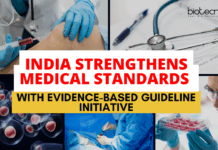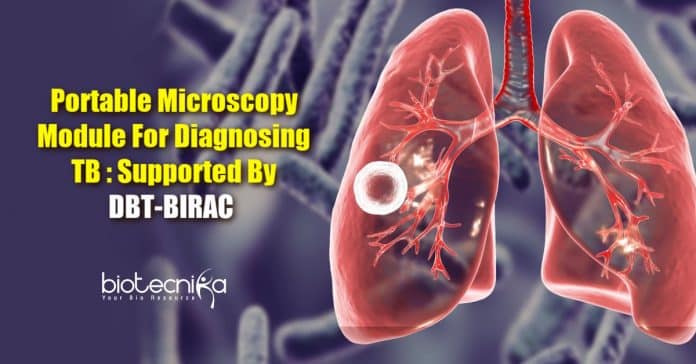A portable microscopy module for diagnosing TB: DBT-BIRAC
In India, Tuberculosis (TB) remains a serious public health concern, accounting for the greatest number of cases around the globe. As articulated by our Honourable
Prime Minister Head of state, several ambitious programs as well as plans have actually been implemented by the government of India to meet an enthusiastic goal of ending TB by 2025. But, there is still a big gap between the number of new cases reported as well as the estimated incident cases (in 2018). This gap is because of a combination of underreporting of identified cases as well as underdiagnosis.
Grand Challenges India with one of its programs has supported start-up Valetude Primus Healthcare Pvt Ltd, as a small add-up to India’s initiative to improve the diagnosis of TB. This early-stage company is trying to address the issue of TB diagnosis with a simple point-of-care diagnostic gadget called “See TB”. This effective testing method can help break the cycle of infection by high sensitive testing of every TB patient at designated microscopy centers.
The quickest, low-cost, extensively uses of screening technique for TB diagnosis in India is sputum smear microscopy using bright field microscopes. The company has
updated the existing bright-field microscopes for highly sensitive fluorescence-based TB diagnosis systems with “See TB”. It transforms the existing basic bright-field microscope and a fluorescent microscope to the overall internal reflection fluorescence without any problem of optical filters and lens installment.This technology is highly compact (approximately the size of a calculator), durable, cost-effective and permits the quick diagnosis of tuberculosis without included infrastructure cost and training. This small gadget can be connected to a simple optical microscope to transform it into a fluorescence microscope, thus making it possible for better TB diagnosis at the point-of-care.
The device is run by battery and enables quick identification of the bacteria. “SeeTB”
utilizes the company’s 2 novel techniques:
- Compact Total Reflection Fluorescence (cTIRF) – excitation device, a novel-patented planar waveguide-based illumination technology developed by Valetude. cTIRF can be used with bright-field microscopes to transform it into a fluorescence microscope, without expensive tool modifications to the existing microscopy setup. Evanescent wave-based illumination boosts the z-resolution in fluorescence imaging and decreases background noise.
- Sputum Thinning Reagent (SLR): Sputum processing reagent is a novel method for sputum thinning. No-specific labeling of debris in spit leads to a poor level of sensitivity
and specificity. Sputum digestion with clearing reagent eliminates debris and releases the bacilli present in sputum for fluorescent labeling. The results have actually revealed that compared to fluorescence microscopy, the CLR-SeeTB system has higher sensitivity.
A portable microscopy module for diagnosing TB: DBT-BIRAC
Author: Sruthi S






























